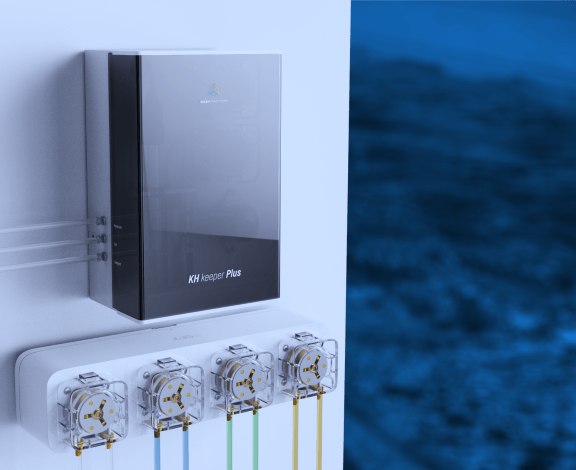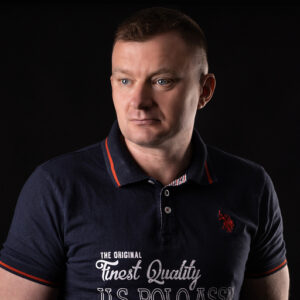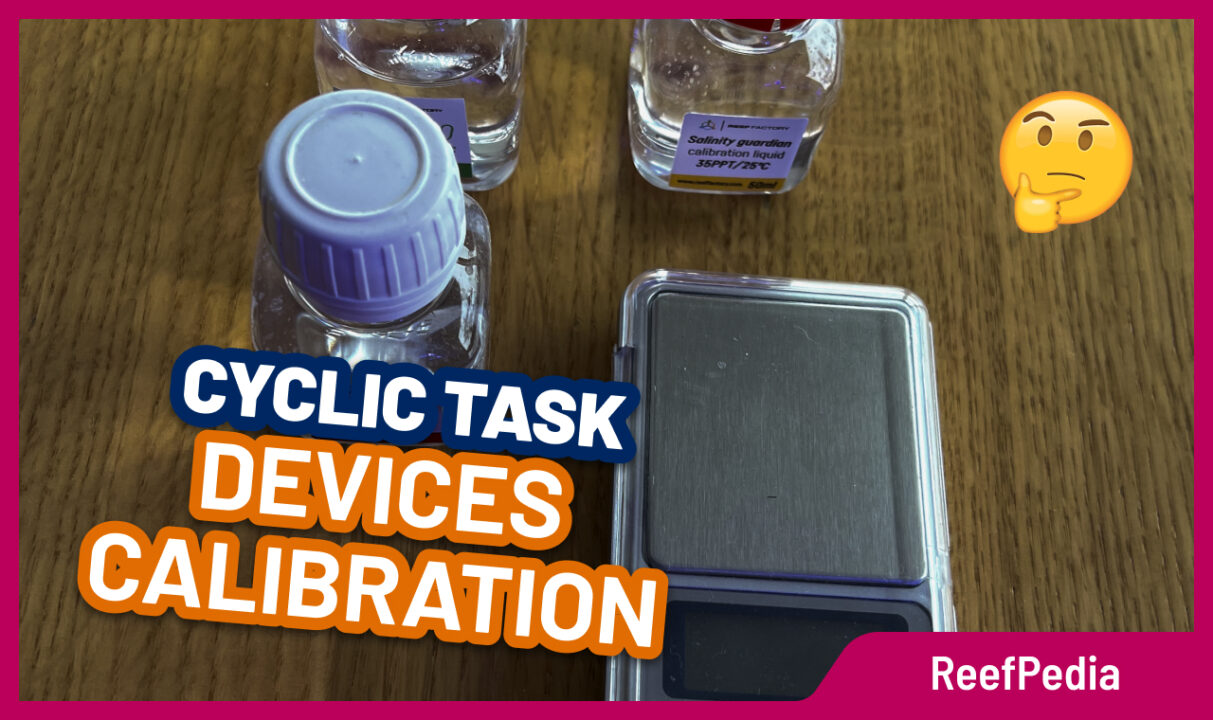Table of Contents
Calibration of devices – Introduction
This article is part of the “Cyclic Tasks” series, aimed at beginner aquarists seeking basic information on managing a marine aquarium. It is also for those considering setting up a tank and wanting to understand the level of effort involved. The calibration of devices in marine aquaristics will be the main focus of this article.
In the article What work on the aquarium should be done periodically you’ll find a complete list of tasks, along with links to articles that expand on individual topics.
Calibration of devices – Which devices do we calibrate?
Calibration includes dosing and measuring devices. Additionally, calibration ensures accuracy, which is crucial for achieving precise, repeatable results with our equipment to fulfill its intended functions.
Devices that need calibration:
- dosing pumps
- automatic meters, for example to measure KH (such as KH keeper Plus)
- monitors for measuring water, for example, for pH or salinity
- you can calibrate the device for replenishing evaporated water (ATO), if it has such a function (Level keeper is an example)
Calibration of devices – How often should it be done?
Calibration should be performed according to the manufacturer’s recommendations. In some cases, if you have sufficient experience, you may rely on your own knowledge. For instance, I calibrated my pumps once, checked them after three months, and the calibration was still accurate.
During calibration, I recommend checking the condition of the tubing on dosing pumps and testing devices. Additionally, ensure that the tubes are not clogged or worn.
The calibration process for each device can be found in the user manuals for the specific equipment.

Calibration of devices – Verification
It is essential to conduct tests after calibration. For dosing pumps, check if they dispense the correct amount of fluid, and for measuring devices, perform test trials.
I recall a situation where a client entered the fluid amount incorrectly during calibration and didn’t verify the calibration by testing the correct fluid volume. The result was unfortunate, so remember to maintain a healthy level of self-skepticism in this process and always double-check your work after calibration!
Summary
The topic of calibration itself is not difficult. As always, it’s about habits and following a few simple rules, mostly set by the equipment manufacturer. Nonetheless, calibration is a very important and necessary task. Ultimately, it impacts the accuracy of the measurements of parameters in our marine aquarium.
About the author

Marek Protasewicz
Reefkeeping has been my passion for over 10 years now. I love learning. The hobby has taught me many valuable lessons, patience being the best example. Combining work and passion is my path. I run Crazy Coral, a marine aquarium shop, for a number of years. Building this business from the scratch I learnt from my own mistakes at a heavy cost.
Later I managed a project aimed at development of methods for quick growth of Corals in non-natural conditions. The project was carried out by Get Sales, Poland. Presently, I am responsible for distribution strategy at Reef Factory, of which I am a co-founder. The company produces smart devices for marine aquaristics. The last projects I have been involved in are Social Reef and ReefPedia.



